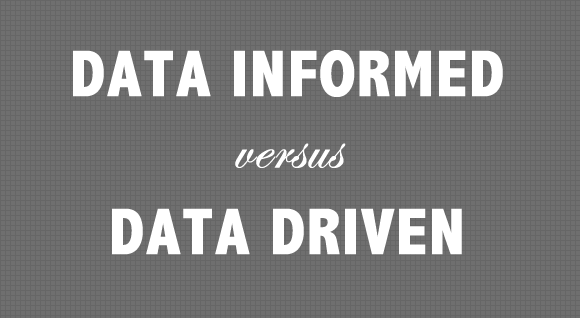The terms “data-driven” and “data-informed” come up when the Federal Reserve Bank makes a statement regarding the economy and the Fed Funds Rate. Their latest statement on December 11 was that the Fed would hold rates steady, and then this:
“In determining the timing and size of future adjustments to the target range for the federal funds rate, the Committee will assess realized and expected economic conditions relative to its maximum employment objective and its symmetric 2 percent inflation objective. This assessment will take into account a wide range of information, including measures of labor market conditions, indicators of inflation pressures and inflation expectations, and readings on financial and international developments.”
With this statement, is the Fed being “data-driven” or “data-informed” about future interest rate moves? What is the difference between the two?

Data-Driven
“Data-Driven” means you let the data guide your decision-making process. You don’t have any particular agenda you want to accomplish and you are being reactive to data as it avails itself when you make decisions or change your tactics as they relate to future policy. With respect to the Fed, as an example, if it were data-driven, if the unemployment rate spikes, even a little, then the Fed might decide to lower the Fed Funds rate, or at least not to raise it, in an effort to stem weakening economic conditions. Likewise, if inflation spikes, even a little, the Fed might raise rates. In these examples, the Fed is reacting to data in an effort to follow their twin mandates of low inflation and high employment.
Data-Informed
“Data-Informed” is sort of the opposite of “data-driven”. Data-Informed means you let data act as a check on your intuition or bias. You have a preconceived idea of where things are headed and you analyze all data to confirm that your preconceived idea is correct or not. If you read the italicized statement from the Fed, it sounds like the Fed is now more data-informed than data-driven. The Fed has an objective of 2% inflation and will set interest rate policies in an effort to achieve 2% inflation. The Fed has a preconceived idea that 2% inflation will be good for the US economy. True, the Fed will consider data for the next interest rate decision, but they are showing an intuition as to the level of inflation they feel appropriate and will check future data to see if the economy is heading in the direction they want.
IMO
What does this all mean for you? Think KISS – keep it simple, stupid. Rates are low and staying that way. The Fed doesn’t see out of control inflation – quite the opposite, they want to see a bit more inflation than they have recently. They certainly do not see a recession on the horizon any time soon. All of this is bullish for the financial markets. The Fed may be more data-informed than data-dependent, but they are not being overly active at this time, and that is good news for the economy.
